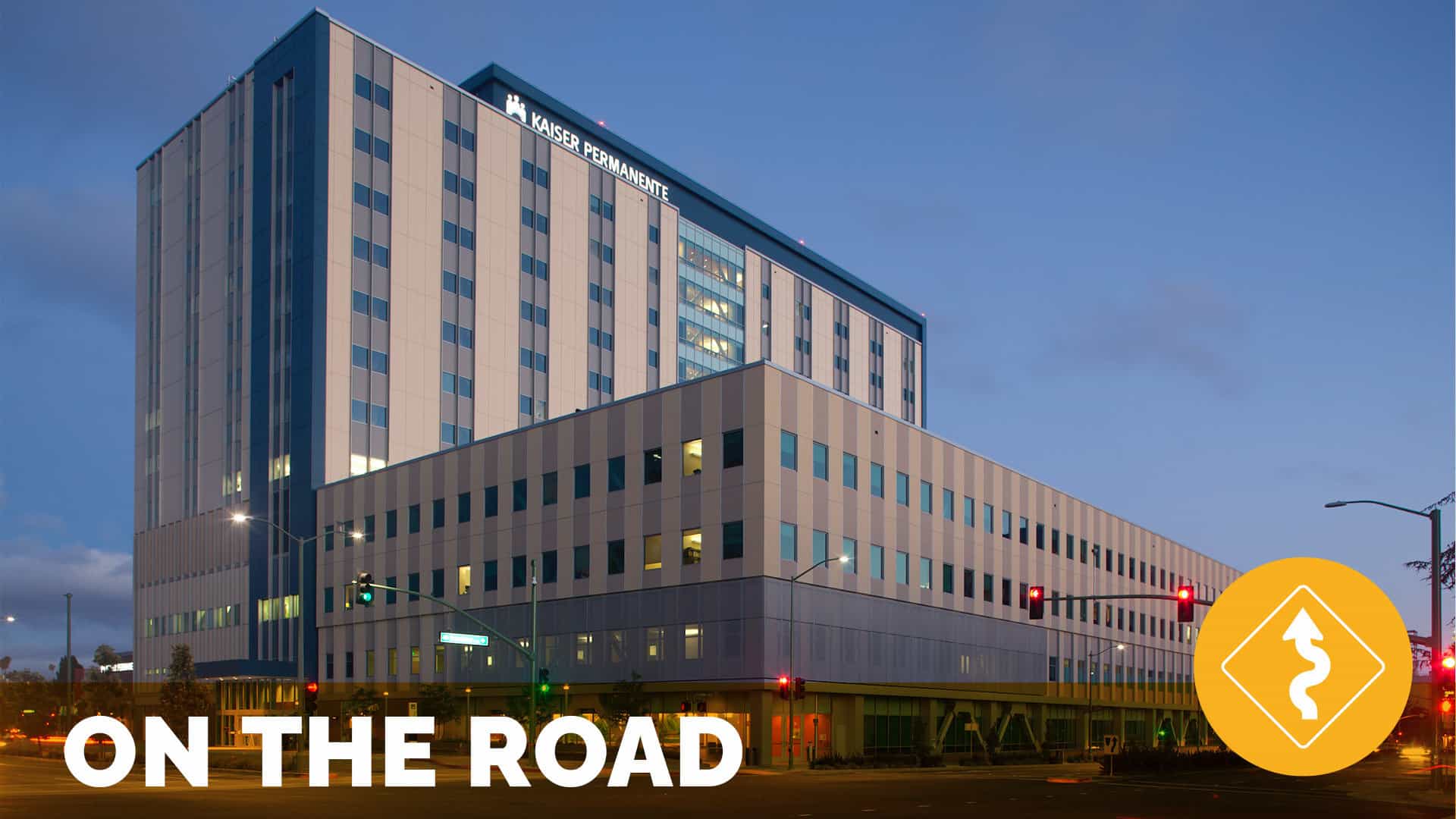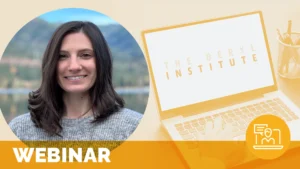An Evolution of Experience

On the Road with Kaiser Permanente & Care Experience in the East Bay – January 2019
by Jason A. Wolf, Ph.D., CPXP
Our latest On the Road took us to the great city of Oakland, and specifically to Oakland Medical Center part of Kaiser Permanente and their community of healthcare services in the East Bay. This visit was a full and exciting example of what can happen with a collaborative and collective effort. It also represented how a large system can truly tackle the experience opportunity in the right size chunks, meaning you don’t have to do it all everywhere at first, but rather by building processes and pathways to success you can create a model that others can replicate to help drive their own outcomes. That is exactly what the team of administrators, physicians, nurses, staff and experience leaders did in driving the exceptional care experience for the community they serve. And they did so right in the backyard of Kaiser’s national headquarters with the support and encouragement of a regional and national team working to ensure excellence in care experience across the entire system.
Evolution in the East Bay
Foundations for Success
Before sharing the powerful example of how the East Bay team built a focus and commitment to experience, I start with an observation of how this On the Road started and was presented. In my many opportunities to visit organizations, I have had numerous people at various times share their perspectives and stories, but what stood out for me in my visit to Oakland was the broad range of committed voices that came together to collectively share their story. A foundational element we can and should take from this is essential to Kaiser Permanente’s success on this journey. It has been the engagement of all players in the system in shared ownership and focus on outcomes. It was the voices of this overall team that underlined the opportunity in recognizing that every role impacts and can drive experience excellence and that all must engage to achieve the greatest success. I note this also for while I may not mention every name present as we kicked off this On the Road, it was unmistakably the combination of all their voices and efforts that drove this process forward.
Starting with some of the key themes that underlined Kaiser Permanente’s efforts were introduced by Judith Park, MD, physician-in-chief for The Permenente Medical Group East Bay, who touched on two key points I saw here that are essential to those organizations who have achieved experience success. First she offered the opportunity in their evolution was one of asking, “How do we create an integrated care experience and a seamless experience for those we care for?” She noted that an essential focus for the team was not to have a medical group strategy or a hospital strategy, but rather to ensure there was an integrated approach so that members and patients had a consistently exceptional experience throughout Kaiser Permanente.
Second, Dr. Park noted that the key to achieving experience excellence required more than a plan to take care of members – the patients and families – they served. It also was about realizing something I believe is a critical trend sweeping across healthcare and one that was evident in our latest State of Patient Experience study. As Dr. Park shared, “Empowering people has to be a foundation of our work.” And it was, as revealed in the thoughtful plan the Kaiser Permanente team put in place to positively impact experience.
A Journey to Exceptional Experience
The team provided an overview of their experience journey that I would encourage you to hear in their own words. I will do my best to honor and paint their effort here in broad strokes. The team that shared this story also reinforced the very essence of collaboration that Dr. Park underlined as essential in her framing. This team included Eric Dordel, Care Experience Practice Leader, Kaiser Foundation Hospital; Carla Wicks, MD, Assistant Physician-in-Chief for The Permanente Medical Group (TPMG) in Richmond; and Chris Hartlove, Assistant Medical Group Administrator for TPMG in Oakland. They represented an integrated team that reinforced the important and intentional connection through the hospital, medical group and outpatient experiences.
In focusing on the journey to experience improvement that this team shared, they bound their efforts with two essential book ends, first, reinforcing what experience was conceptually by grounding people in a definition of experience. I was honored to see the team chose to adopt The Beryl Institute’s definition – The sum of all interactions, shaped by an organization’s culture, that influence patient perceptions, across the continuum of care – as a framing for this and by setting an aspirational destination – the exceptional care experience. This journey was then built around three major steps: first, connect with and engage staff and providers, second, connect with patients and families, and third, ensure a consistent delivery process grounded in a set of core and aspirational values to deliver care that is consistent, convenient, coordinated, compassionate, competent and culturally humble for each and every person served in every encounter.
The Kaiser Permanente team then enacted a three-year road map to drive their overall objectives, starting with foundation building, working to build and engage teams, and then working on improvement and spread. While I will not discuss all the items, I will highlight a few key steps on the journey.
Awareness. Any good plan begins with awareness and alignment. The Kaiser team recognized the need to help people not only understand that a change was going to happen, but also the what and why it was important. This connection to purpose and then alignment with goals and performance recognition was designed to get everyone focused on one clear and aligned direction.
Engaging teams and elevating knowledge. A critical part of the process was refocusing and expanding the teams of individuals committed to experience excellence work. Aside from a core experience team, improvement teams were established to tackle more specific issues such as medication communication and cleanliness. In addition, the team launched a great exemplar effort, the “I Am the Care Experience” Crowdsourcing Campaign. As Eric Dordel offered, “To make real progress we realized we needed to allow people to get together and share their knowledge.” The intention of the effort was to understand the perceptions of both members and employees, to reveal gaps in understanding and to engage employees by reinforcing ownership of the process.
Through asking people a set of questions—including (1) What does an exceptional care experience mean to you?, and (2) What does excellent service mean to our patients?—the team was able to evaluate, group and thematically align ideas. It also allowed the team to understand what was already inherent in their work, where attention was needed and where there were bigger improvement opportunities. The campaign that followed this collection of data provided for an aligned and thoughtful campaign of ideas that could be rolled out, injected in team huddles and included in other communications around core themes. These themes included compassion, kindness, respect and empathy. Interestingly enough, this set of findings from Kaiser Permanente further reinforces all that was discovered in both our 2018 Consumer Study and the exploration of Influence Factors on Patient Experience—that the human experience in healthcare is essential, and that while clinical excellence is the expectation, we must get both right consistently.
Expanding and Reinforcing Excellence. In the most recent phase of the journey, the team has continued its work, focusing on both coaching for exceptional excellence and conducting a “Bright Spot Study” in which high performing units and teams are studied to understand how they are achieving their objectives, and then working to spread these lessons throughout the organization.
The intentionality of this plan also allowed for both individualization and adaptation of lessons learned and appropriate efforts based on specific unit and department needs. As Chris Hartlove reinforced, “One of the things we realized is a one-size fits all model would not work for care experience.” This is a critical point to underline, bold and highlight. It is also the essence of all we have built The Beryl Institute itself to be. There is no one right model for everyone, but rather the collection of knowledge we all share that can be adapted to individual and organizational needs.
We must not be drawn into quick fixes, but rather when creating a plan that fits your organization from the vast array of shared knowledge that exists, you will ultimately find yourself on the fastest path to success. Chris reinforced the essence of this, an idea that has led the care experience effort to success. She shared, “We were not going to and we didn’t dictate the same path for everyone, but we were very clear on the destination.”
Yet, while there may be many paths to excellence, I believe all healthcare organizations are clear on destination. It is finding the right mix of actions as was laid out by the team at Kaiser Permanente that will create the path to the greatest success. This is no better exemplified than in the opportunity I had during my visit to see this work in play at the Pediatric Center embedded in Kaiser Permanente Oakland Medical Center.
Ideas in Action: A Hospital in a Hospital – Kaiser East Bay Pediatric Center
To see these ideas in practice I had the opportunity to visit with the team from Marc Blumberg, MD, Chief of Pediatric Hospital Medicine, and walk the halls with Ruth Adedeji, Department Manager, Pediatrics. What Dr. Blumberg pointed out to start was an opportunity for them and a critical focus, “To create a world-class Pediatric Center in a general hospital.” Key to this was creating a friendly and engaging environment for both pediatric patients and their families, one that not only was present on the pediatric floors, but one that was felt from the moment you entered the overall facility.
The passion of the pediatric team was palpable and seemed fundamental to all the team at Kaiser Permanente shared. Dr. Blumberg was very clear on their purpose, saying, “Children are the future of healthcare and of Kaiser Permanente. They are the future of our community and of our society. So we must get it right. What we do for and with them lays the foundation for decades of health.” This was a powerful idea I have yet to hear expressed in my travels, in seeing children not simply as a unique set of patients, but also as the foundation of the society healthcare seeks to help and heal.
From this lens, the practices that the Pediatric Center put in place were clear and tangible. One, that they needed to be in consistent and effective communication with those they serve and each other, and two, there must be an unwavering acknowledgement of the humanness of healthcare – as was reinforced in the very findings of the “I am the Care Experience” effort. This was further revealed in my chance to round with Ruth, Dr. Blumberg and his team.
A critical element of their efforts in the Pediatric Center was patient- and family- centered rounds, a practice I see more organizations trying to implement and one that takes clear commitment and coordination. In the case of Kaiser Permanente’s East Bay Pediatric Center there was a focused effort to (1) ensure rounding was scheduled so family members would be present for any questions or concerns, (2) the process used critical words and phrases to guide the conversation and to ensure it was understandable to patients and family members and (3) that for all rounds a full multidisciplinary team is engaged to ensure comprehensive and integrated attention and streamlined care.
I had the chance to participate in the rounds and see first-hand how this interdisciplinary team stayed on task in listening and engaging the patient’s questions, conveying critical clinical information and milestones on the care plan and most importantly met the family member where they were. I had the chance to be part of the rounds with a mother of a newborn whose baby was in the hospital for bronchial issues. She outwardly showed clear nervousness about what she needed to do for her baby. As the team engaged her on what was needed, talked with her about her fears and about how they could and would help her, you could visibly see the face of the mom change from one of fear and even subtle confusion to a smile of growing confidence. I had a chance to ask the mom about her thoughts on the experience and she responded sharing, “They first help me know they are doing everything they can for my baby, but they also listen and help me believe in what I can do. They show me they care and that is most important for me.”
This idea of caring in the pediatric experience was not only apparent in the environment of the unit that was welcoming and lined with amazing artwork to engage the patients and families. It was also evident in the processes I saw as well. Two examples reinforce this.
The first, the “take a seat chair”, was an example of a simple process I see in more and more places based on evidence that sitting at the bed side or in a conversation with a family member has a number of benefits from an experience of caring and compassion, to a greater understanding of the care process, and even the perception of more time spent. Ruth showed me one of the chairs and expressed how it has created an environment where people can engage in critical dialogue and information sharing and even de-stress an otherwise often stressful environment.
The second practice was around technology and connectivity that based on telemedicine, Kaiser Permanente’s East Bay Kaiser East Bay Pediatric Center can extend their reach throughout their regional network. With telemedicine stations in emergency departments throughout the region, this hub of virtual intensivists can run consults for pediatric patients across all Bay Area hospitals and help make critical decisions in the moment they are needed for their patients. Using the virtual to create personal connections is a significant and growing element in healthcare, and I believe we will find ourselves continuing to grow a skill set to master this resource, bringing the best in care services to all corners of the communities that healthcare organizations serve. Dr. Eloa Adams shared that as they have refined the process and seen great outcomes there have also been some unanticipated benefits as well. In connecting via telemedicine they are finding they have the opportunity to connect with and get to know patients before they ever show up at the hospital, which helps to create personal connections and start the care process in a way that leads to more effective care overall.
The efforts taking place at Kaiser East Bay Pediatric Center are much more than I can list here from the small but significant touches such as the “Ring the Bell” Celebration to signify the end or transition in treatment and decorated pillowcases as a gift from the team to patients as leave the facility. Most importantly and something implicit in my travels through the halls of Kaiser Permanente’s East Bay Pediatric Center and Oakland Medical Center was the joy people brought to their work and the sense of connectivity and team that existed. The smiles and care for one another was as evident as the care they provided those they served. That may be the ultimate measure of the success in following the evolution of their care experience journey overall.
No Place I’d Rather Be
In wrapping up my time as I do on all my visits, I asked for any reflections or stories. There are a few points I’d like to share here that show what is possible when you commit to an evolution in experience. One individual shared a story about a patient and his/her parents returned to the facility this year after being here three years ago. The family shared that is was a completely different experience than they had previously. For these parents it was clear as well that the team wasn’t doing anything new medically, the clinical competence was still evident, but people were taking the time to make unique and authentic connections, and they noticed that the way the team worked together was different. As the family member shared, “It is clear that the staff wants to work together.”
This idea of a different place and of a different experience is not unimaginable, and as we have seen here very possible. What Jeff Collins, Kaiser Foundation Hospitals Area Manager (comparable to the CEO of the hospital) offered was, “It is clear that we are innovating and there is an elevating sense of ownership.” And as Ed Chen, COO of Oakland Medical Center added, “Our people are feeling this at all levels. I had one staff member share with me ‘my contributions make a difference no matter when or who is watching’.”
If as the team said at the start, they could define the what and why and set the destination for success in getting there, then they had done the most important work. What is clear is that framing with the intentional efforts that have taken place along this evolutionary journey has enabled Kaiser Permanente’s Oakland Medical Center to become what it is today. And as in any organization committed to improvement, the team wrapped up our time almost in unison in saying we are not “there” yet. I believe and have seen time and again the places that get the critical commitment to experience excellence never truly believe they are there. That is why it is a journey not a destination and they could all say as that family member or traveling nurse shared. There is now no place I’d rather be.
If as the team said at the start, they could define the what and why and set the destination for success in getting there, then they had done the most important work. What is clear is that framing with the intentional efforts that have taken place along this evolutionary journey has enabled Oakland Medical Center to become what it is today. And as in any organization committed to improvement, the team wrapped up our time almost in unison in saying we are not “there” yet. I believe and have seen time and again the places that get the critical commitment to experience excellence never truly believe they are there. That is why it is a journey not a destination and they could all say as that family member or traveling nurse shared. There is now no place I’d rather be.
My thanks to the entire team at Kaiser Permanente National and the team from the Oakland Medical Center, Kaiser Permanente East Bay Pediatric Center, and The Permanente Medical Group. I am only sorry I couldn’t mention every one of you who contributed to my visit. I can say without hesitation; your intention is clear and contagious. Congratulations on all you have accomplished.
Related content
-
 Culture & Leadership | Staff & Provider Engagement
Culture & Leadership | Staff & Provider EngagementNonviolent Communication to Improve the Human Experience
Discover the transformative power of Nonviolent Communication (NVC) in this engaging webinar. Grounded in emotional intelligence, NVC equips healthcare professionals with tools to resolve disputes and prevent conflict escalation through clear, compassionate communication. Participants will explore NVC’s four-step framework, which focuses on identifying feelings, understanding needs, and connecting with values that shape actions and motivations.
Learn more -
 Staff & Provider Engagement
Staff & Provider EngagementTransforming Residents into Patient Experience Champions
This learning bite highlights an innovative approach to integrating patient experience education into a residency program at SUNY Upstate Medical University. Through “Rotation X,” residents engage in “The Voice of the Patient” sessions, gathering insights directly from patients to improve care. Learn how this initiative equips physicians with the skills, knowledge, and tools to enhance
Learn more -
 Culture & Leadership
Culture & LeadershipThe Value Case for Improving Human Experience in Healthcare
This white paper explores the concept of experience-driven value in healthcare and the corresponding value of experience. An expanded version of the article printed in PXJ Investing in the bottom line: The value case for improving human experience in healthcare, this paper provides real-world case studies and actionable strategies that demonstrate how true value is
Learn more
